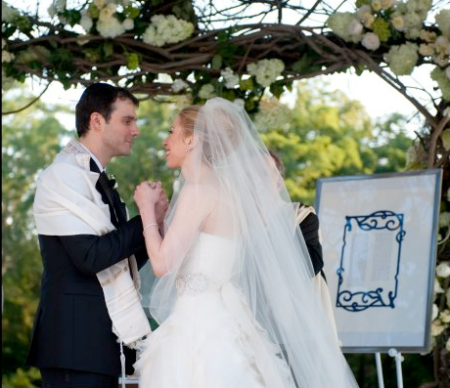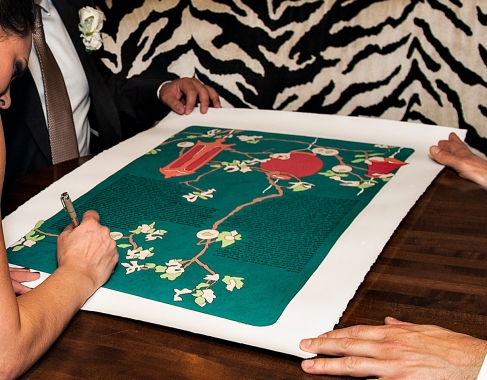Thirteen years ago I created a ketubah for a close friend. Knowing I knew Hebrew calligraphy and could draw, he asked me to use my artistic license and create a piece of art for their traditional Jewish wedding. Word spread and suddenly I had a new career for myself.
Never have I fully explained exactly what a ketubah is. So here it goes.
The ketubah is a marriage contract that the groom is required to give the bride spelling out the husband’s obligation to his wife. Originally, it was considered so binding that a couple whose ketubah had been lost was forbidden to live together until a new ketubah was written.
Although the ketubah is not mentioned in the Torah, the first reference to a deed associated with a Jewish marriage ceremony is the 5th century BCE. Written in Aramaic, the spoken and written language of the period, it specified that a groom must provide his wife with “food, clothing, and necessities” and entitled him to her earnings. It protected her from arbitrary divorce and guaranteed her alimony.
In the Middle Ages it was standardized and used throughout Central and Western Europe. In 1492 after the Spanish expulsion, the Jews who resettled made slight departures from the standard text by adopting local customs.
When Israel was established, ketubah text was standardized. During the 1970’s, illuminated ketubot experienced a resurgence that has continued, not only among Jewish couples, but among others who wished to have a custom written document celebrating their marriage.
Many couples commission ketubot with traditional language using both Aramaic and English while others choose their own special vows.
Pictured is my Art Nouveau ketubah.






